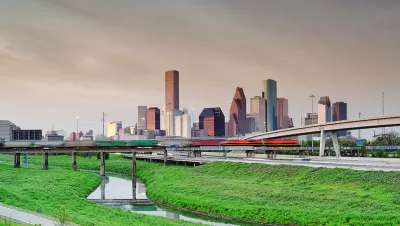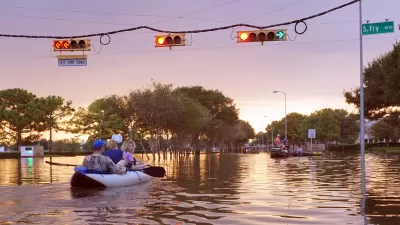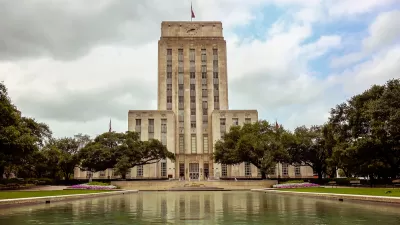Kinder Institute director William Fulton discusses Houston's changing demographics and economic prospects. He sees the city as a place to pioneer and implement solutions to Sun Belt problems.

In an interview with Next City publisher Tom Dallessio, Kinder Institute head William Fulton says Houston can and should become a leader in Sun Belt urban innovation. Having served as mayor of Ventura, California, Fulton arrived in a Houston on the verge of rapid change.
"I'm amazed at what a dynamic urban place Houston is. It has been having its moment on the national stage recently with the Bayou Greenways plan, the reimagining of the bus system, new bike plan and two new light-rail lines. It's becoming recognized by major urban organizations as a place that is equipped to deal with the emerging issues affecting the entire Sun Belt."
On the demographic front, "Houston is moving past the old white/black dynamic to much more of a melting pot. There are more Vietnamese people in Houston than in any other area of the U.S. outside of California." Like much of the Sun Belt, Houston now boasts a large Latino population, nearly half of the total.
If Houston surpasses Chicago to become the third most populous city in the nation, Fulton argues it should also develop leadership approaches to flood resilience and equitable development.
FULL STORY: Why Houston Can Lead Urban Change in the Sun Belt

Trump Administration Could Effectively End Housing Voucher Program
Federal officials are eyeing major cuts to the Section 8 program that helps millions of low-income households pay rent.

Planetizen Federal Action Tracker
A weekly monitor of how Trump’s orders and actions are impacting planners and planning in America.

The 120 Year Old Tiny Home Villages That Sheltered San Francisco’s Earthquake Refugees
More than a century ago, San Francisco mobilized to house thousands of residents displaced by the 1906 earthquake. Could their strategy offer a model for the present?

HSR Reaches Key Settlement in Northern California City
The state’s high-speed rail authority reached an agreement with Millbrae, a key city on the train’s proposed route to San Francisco.

Washington State Legislature Passes Parking Reform Bill
A bill that would limit parking requirements for new developments is headed to the governor’s desk.

Missouri Law Would Ban Protections for Housing Voucher Users
A state law seeks to overturn source-of-income discrimination bans passed by several Missouri cities.
Urban Design for Planners 1: Software Tools
This six-course series explores essential urban design concepts using open source software and equips planners with the tools they need to participate fully in the urban design process.
Planning for Universal Design
Learn the tools for implementing Universal Design in planning regulations.
Ada County Highway District
Clanton & Associates, Inc.
Jessamine County Fiscal Court
Institute for Housing and Urban Development Studies (IHS)
City of Grandview
Harvard GSD Executive Education
Toledo-Lucas County Plan Commissions
Salt Lake City
NYU Wagner Graduate School of Public Service




























